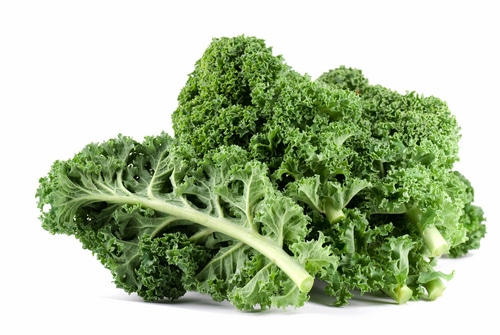
Nutritional Content
Kale is one of the most naturally nutritious foods you can find at the grocery store. It is an excellent source of vitamin K, vitamin A, and vitamin C. It also contains significant amounts of fiber, calcium, iron, magnesium, copper, phosphorus and potassium. One cup of Kale has less than 50 calories and contains no fat or refined sugar.
Cholesterol Reduction
The fiber content in kale, which is five grams per cup, can help reduce your cholesterol. Low cholesterol decreases your risk of developing heart disease. The fiber in kale is most effective at cholesterol reduction when the kale is served cooked.
Cancer Prevention
Kale contains high concentrations of antioxidants and glucosinolates that help prevent cancer. Research finds that regular consumption of these nutrients reduces your risk of developing a number of cancers including bladder cancer, breast cancer, colon cancer, ovarian cancer, and prostate cancer.
Other Health Benefits
Evidence suggests that the nutrients in kale can assist your body’s detoxification process, reduce inflammation and aid your digestion. Its high concentration of vitamin K is also essential for blood clotting and bone health.
Getting the Most Out of Kale
Kale is a cruciferous plant in the same category as broccoli, cabbage, brussels sprouts, collard greens, and cauliflower. You should eat at least a cup and half of kale or other cruciferous vegetables two to three times a week to benefit from their nutritional properties. To select the freshest kale, look for leaves that are firm and deep in color and hardy stems. You can refrigerate it unwashed in a sealed bag for up to five days before it starts to taste bitter and lose its texture. The best way to prepare kale so your body can absorb its nutrients is to chop it up and then steam it for five minutes, although you will still benefit from eating it in other ways.
Preparation Ideas
Kale has a mild but unique flavor that makes it very versatile. Try a number of these preparation techniques to discover what you like best.
1. Blend raw or cooked kale into a smoothie or add it to other ingredients in a juicer. If you mix it with sweet fruits, you may not even taste it.
2. Chop and add raw kale to a leafy salad or fruit salad.
3. Add small pieces of chopped kale to soups and stews.
4. Toss cooked and chopped kale with whole-grain pasta, olive oil, and garlic.
5. Add chopped kale to scrambled eggs or other egg dishes.
6. Bake kale chips. Cut the leaves into small pieces, place them on a cookie sheet and drizzle olive oil over them. Lightly add salt and bake them for 15 minutes at 350 degrees Fahrenheit.
7. Bake chopped kale into casserole dishes.
8. Add chopped kale to stir-fry.
Related Articles By Cathe:
Nine Fascinating Health Benefits of Kale
Can Eating Leafy Greens Improve Your Exercise Performance?
6 Healthy Autumn Produce Choices to Pick Up at Your Local Farmer’s Market
Calcium Absorption: How Much Calcium Are You Actually Absorbing from the Food You Eat?

